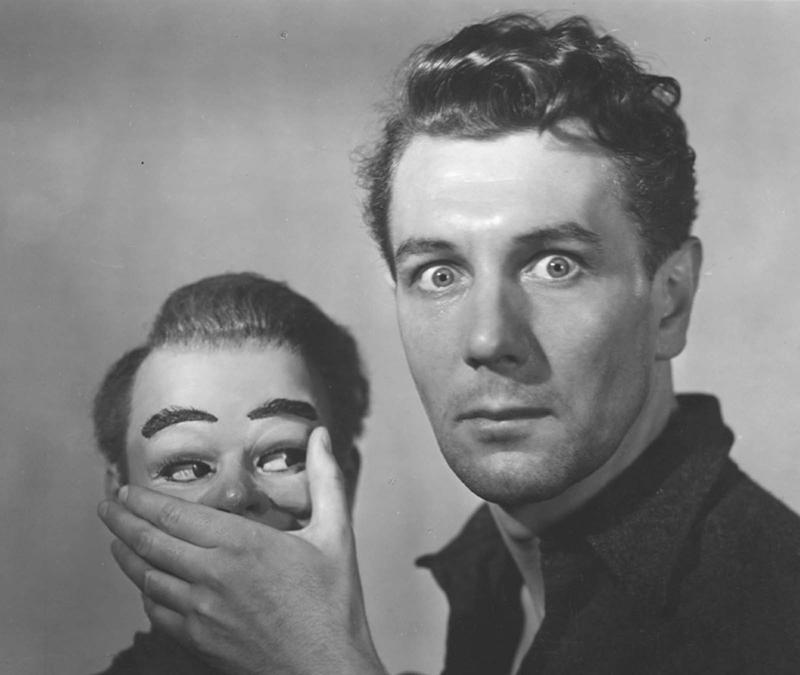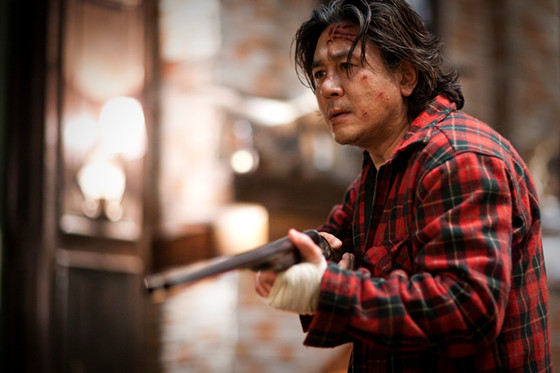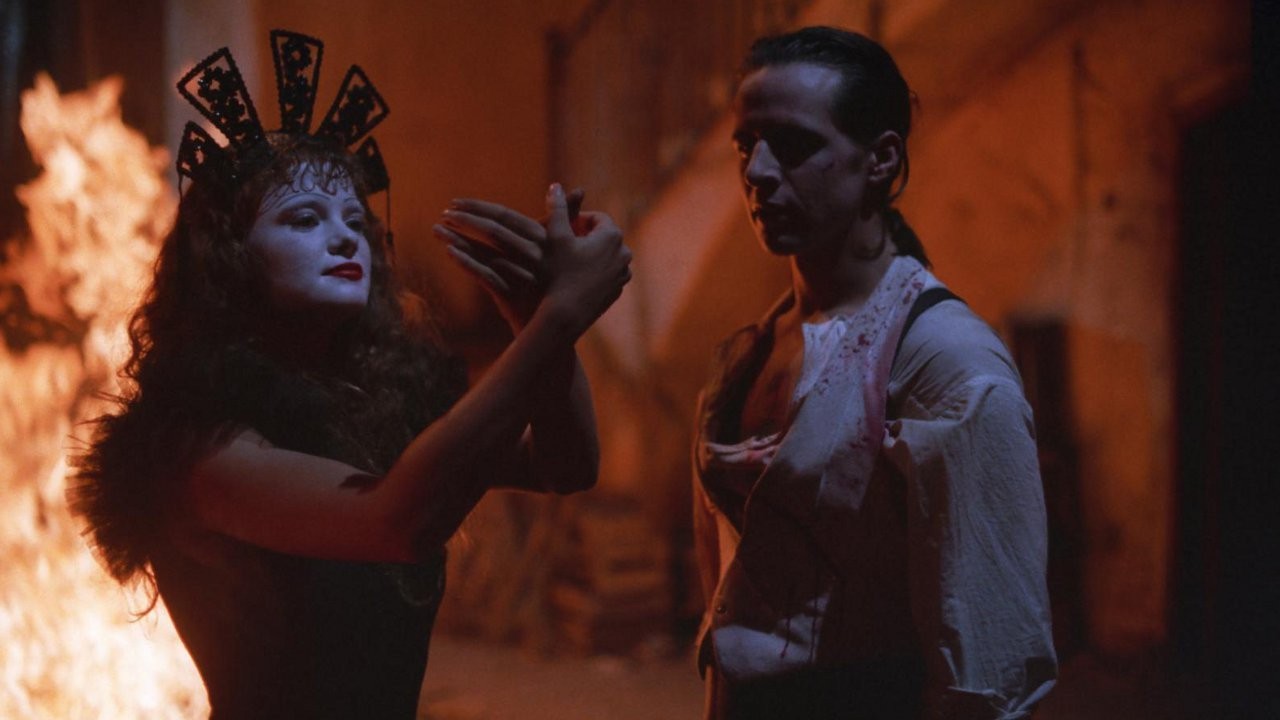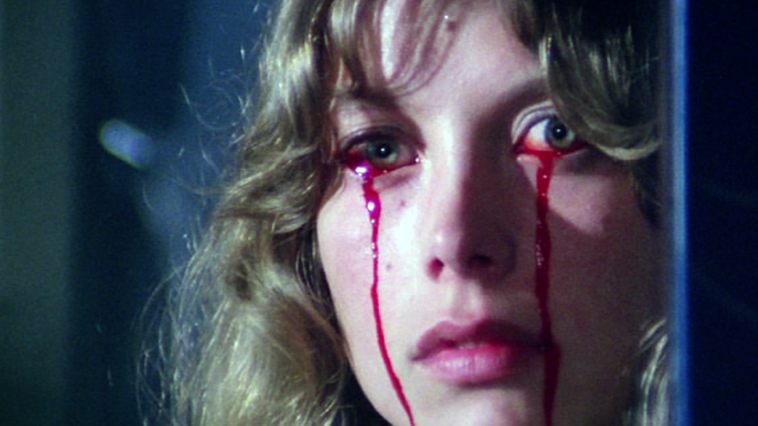5. Audition

It’s well known by any film fan now the turn that Takashi Miike’s Audition takes in going from a quirky romance to a teeth-gnashing torture film. It’s the film that introduced the prolific Japanese auteur (who cranks out one film after the other with now over 100 credits to his name) to the international market and also serves as one of his greatest and best-known films.
When widower, Shigeharu, believes it’s time for him to find love again, he is assisted by his film producer friend by staging an audition to help find suitable matches for Shigeharu. He is quickly smitten by the kind and mysterious auditionee, Asami, and the two begin a relationship only for the film to slowly reveal the true malevolent nature of his apparent soul-mate.
It’s not the only occasion Miike has lent his hand in horror; with the surreal and disturbing Gozu; the comic depravity of Visitor Q; the bizarre animated musical The Happiness of the Katakuris; and his notorious Masters of Horror episode Imprint all being worthwhile viewing, yet none come close to the effectiveness of the stress-inducing feeling of watching Audition’s final act cruelly unfold and is rightly placed as one of the finest J-horrors. The sound of piano wire cutting through bone while Asami excitedly squeaks out “Kiri kiri kiri kiri kiri kiri!” will be forever seared into your mind.
4. Dead of Night

The anthology format in film has long been synonymous with horror as examples like Creepshow, Twilight Zone and even more experimental usages such as The ABCs of Death all incorporating camp-fire ghost stories as the basis of their idea, but it is one of the earliest usages that stands as the greatest and most chilling and one that served as the influence for all other anthology horrors for decades to come.
This 1945 effort from British studio Ealing, a production company known primarily for Drama and War films, features a wraparound story that centres on Walter, an architect troubled with recurring nightmares, who visits his friend’s country-house on a business matter only for the guests he meets there and the ghostly stories they tell eerily reminding him of his recurring dreams.
Perhaps best known for its show stealing final segment featuring a ventriloquist who believes his dummy to be both alive and malevolent, Dead of Night’s other stories remain just as creepy with a children’s game of hide and seek where one of the players encounters the spirit of a child likewise taking part in the game and a story of a man becoming obsessed with a mirror that reflects a different reality than his own.
For a film that’s now over 70 years old, it’s remarkable how well Dead of Night holds up in both the effectiveness of its scares and the creativity in its storytelling with a twist ending that, while unfortunately aped in many films after it, still provides a downbeat and nightmarish end that remains haunting to this day.
3. I Saw the Devil

Displaying as much style in its slick direction as it does in arterial spray, South Korean director Kim Jee-woon’s I Saw the Devil portrays the now familiar trope of ‘staring into the abyss and the abyss to stare back’, but rarely in film is the descent into darkness as gripping and entertaining as this.
When serial killer, Jang Kyung-chu (played by Oldboy’s Choi Min-sik), viciously murders the fiancé of National Intelligence Service agent, Kim Soo-hyun, the agent uses all the necessary skills and resources his profession has given him to repeatedly track down and beat the absolute shit out of Kyung-chu so that he too will learn the true meaning of suffering.
Featuring some of the most gripping and wince-inducing confrontations delivered by a master director in Je-woon, whose A Bittersweet Life and The Good, The Bad, The Weird are some of the most high-energy and stylish action films of all time, who pits two incredibly dangerous individuals against each other; one mercilessly driven by a vengeance that continually corrupts his humanity, and the other a despicable and sadistic killer who will happily dole equal amount of pain back.
Look out for the taxi scene that combines nerve-rattling tension, chaotic camera work and jaw dropping ultra-violence in equal measure and a final shot that begs the question whether Soo-hyun’s quest for revenge was truly worth the pain it caused.
2. Santa Sangre

A neon-drenched nightmare with deep roots in Mexican culture, Surrealist filmmaker Alejandro Jodorowsky’s attempt at the genre after making two seminal midnight movies in El Topo and The Holy Mountain, was Santa Sangre, a 1989 effort that may be one of the greatest horrors of all time as well as one of the most visually stunning, ranking in league with the gorgeous Suspiria.
As surreal and grotesque as any of Jodorowsky’s works but easily his most straightforward and accessible, Sangre stars the director’s real-life son, Axel Jodorowsky, as Fenix, a circus magician in a family of performers who as a young boy, witnesses his knife-thrower father maim his trapeze artist mother (who is also a religious cult leader) after she uncovers his infidelity.
Now an adult and having spent his time since the tragedy in a mental institution, Fenix escapes and reunites with his now armless mother only for the domineering and manipulative matriarch to now hold a menacing psychological hold on her son. She forces Fenix to act as her arms (exactly as it sounds), ordering him to kill any other female who attempts to grow close to him.
Santa Sangre functions as effectively in its gruesome slasher set-pieces as it does in its quieter, but nonetheless absurd, sequences with a memorable segment featuring Fenix, whose arms wrapped in his mother’s clothing as he sits directly behind her, playing the piano in place of her as if she was fully limbed whilst his mother scolds him with every wrong key struck while reminding him that they are no longer his hands to control.
It’s far from convention, but Santa Sangre stands as a highlight in Jodorowsky’s already strong filmography, serving as a perfect entry point for those curious to explore Jodorowsky’s insane world of deformities, bloodshed and copious religious imagery and symbolism.
1. City of the Living Dead

An international horror list wouldn’t be complete without a delve into Italian exploitation cinema and with copious amounts of titles that could qualify ranging from the hyper-stylised giallos of Dario Argento to the cannibal flicks of Umberto Lenzi, it is Lucio ‘Godfather of Gore’ Fulci who finds placement here with City of the Living Dead. What it lacks in general plot coherence it more than makes up for with a non-stop barrage of nightmarish and bizarre imagery that easily makes City the most visually striking from his filmography.
Made in the middle of an impressive two year run of his four most famous works from 1979 to 1981 with Zombie Flesh Eaters, House by the Cemetery and The Beyond, City of the Living Dead opens with a priest committing suicide, an act that happens to cause the gates of hell to open, the dead to rise and logic to be tossed out the window. It’s now up to an American Journalist (played by exploitation veteran Christopher George) and a young psychic (who is mistakenly buried alive at the beginning of the film) to close the gates before the dead fully take over.
It’s less of a zombie film and more loosely connected horror set-pieces packed with surrealism and viscera, but it’s what provides City with its rough charm and makes for a sonically bombastic audio/visual experience.
As soon as girls start vomiting out their entrails and heads are drilled through with large power tools, Fulci’s film goes delightfully off the rails and occasionally feels almost unintentionally avant-garde but nevertheless serves as a benefit for this fine piece of EuroTrash.